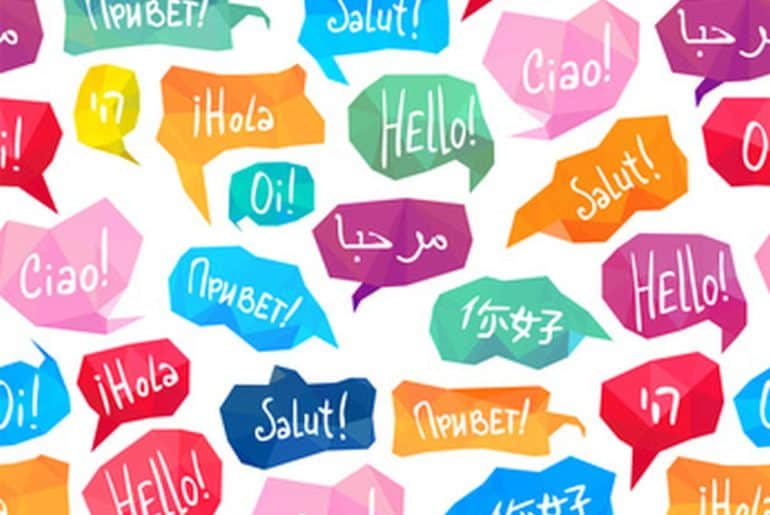A prestigious institution in the country, the University of Delhi (DU) is a hub for students looking to make a career, and houses the best colleges in the field of science, commerce and arts courses in the country.
The University of Delhi not only offers the mainstream courses, but also offers certificate and diploma courses in languages such as Romanian, German, Spanish, Portuguese, French, and Italian. As the world is turning into a global village and different foreign firms are entering the Indian markets, there are a large number of job opportunities that are being created to tackle the demand by these firms.
There are many factors that one should consider while choosing a foreign language to learn in DU, some of these factors being: difficulty level, personal preference, interest, target country or region, sectors or industries, possible immigration, and future goals, etc. French, Spanish, German, Chinese, and Japanese remain the most sought-after languages for most of the students interested in pursuing foreign language courses in DU. However, in recent years, demand for Portuguese, Italian, Russian, Korean and Arabic has also been on the rise.
Ayush, a Literature student from Kirorimal College who pursued Mandarin language from St. Stephen’s College found the experience to be ‘mixed’ and said, “The faculty was brilliant and I was able to learn the language as well as the culture, since our teachers made sure we celebrated Chinese festivals and devoured Chinese cuisine. Although, it was a task to handle the academics as the exams for the language courses start around ten days before the semester exam. Over all, it was worth it!”
Another student of Philosophy from Miranda House, Rupali Gujral, who pursued Spanish language from Hansraj College stated, “The fees was very feasible and although it did become a little hectic to juggle academics and language course, it was pretty amazing. I would advise students to go for it preferably in the first year itself as it is less tedious then.”
Application forms for the courses can be obtained from the respective colleges. St. Stephen’s College has made their registration process completely online. Colleges release merit lists based on the composite scores of best four subjects studied at Higher Secondary level. Once enlisted in the said merit list, students are required to report to the respective college and complete their admission. Self-attested documents including class 12 marksheets and class 10 marksheet-cum-certificate are required to be submitted along with the fees.
Considering the myriad options that DU has to offer and its wide-ranging opportunities, DU Beat brings you all the information you need about Language courses at DU.
(i) Delhi University – North Campus Colleges
- St. Stephen’s College, University Enclave – Certificate, Diploma & Advanced Diploma in French, Spanish, German, Chinese and Japanese. Certificate and Diploma in Arabic, and Certificate in Persian.
- Sri Guru Gobind Singh College of Commerce, Pitampura – Certificate in French, German, Chinese, Korean and Japanese.
- Satyawati College, Ashok Vihar – Certificate & Diploma in French and German.
- Daulat Ram College*, Maurice Nagar – Certificate, Diploma & Advanced Diploma in French, Spanish, Italian, German, Chinese, Korean and Japanese.
- Hansraj College, Malka Ganj – Certificate, Diploma & Advanced Diploma in French and German.
- Ramjas College, Maurice Nagar, Delhi University – Certificate course in French, Spanish, German, Italian, Korean, Japanese & Chinese, Diploma in French, Japanese & Chinese and Advanced Diploma in French.
- Keshav Mahavidyalaya, Pitampura, Near Sainik Vihar – Certificate course in French and German.
- Mata Sundri College*, Mata Sundri Lane – Certificate course in French, Spanish and German.
- Miranda House*, Patel Chest Marg – Certificate course in French, Spanish and German.
- SGTB Khalsa College, Mall Road – Certificate course in Spanish, Russian, German, Korean, Chinese and Japanese.
- Deen Dayal Upadhyaya College, Karampura – Certificate course in Russian.
- Hindu College, University of Delhi – Certificate course in French, German, Spanish and Russian.
- Zakir Husain College, Jawaharlal Nehru Marg – Certificate course in Russian.
- LakshmiBai College*, Ashok Vihar – Certificate course in Chinese and Japanese.
- Kalindi College*, East Patel Nagar – Certificate course in Chinese language.
(ii) Delhi University – South Campus Colleges
- Jesus & Mary College*, Chanakyapuri – Certificate course in French.
- College of Vocational Studies, Sheikh Sarai Ph-II – Certificate course and Diploma in French and German.
- Delhi College of Arts and Commerce, Netaji Nagar – Certificate course in French, German and Spanish, and Diploma in Spanish and German.
- Acharya Narendra Dev College, Govindpuri, Kalkaji – Certificate in Russian; Certificate & Diploma in French, Spanish and German & Advanced Diploma in Spanish.
- Kamla Nehru College*, August- Kranti Marg – Certificate, Diploma & Advanced Diploma in French
- Bharati College*, Janakpuri – Certificate in Russian, French, Chinese and German, and Diploma and Advanced Diploma in French and German.
- Sri Venkateswara College, Dhaula Kuan – Certificate course in German and Chinese.
- Gargi College*, Siri Fort Road – Certificate course in German.
- Lady Shri Ram College*, Lajpat Nagar 4 – Certificate course in Russian.
*Women’s colleges of DU.
Certificate level requires candidates to have passed 10+2. For Diploma and Advanced Diploma level, certification and Diploma is required respectively in the corresponding language. Admission will be given on merit or entrance test.
All the colleges offer convenient time slots for the classes on all the days. The fee structure too is pocket friendly varying from INR 12,000- INR 19,000 depending on the course and time slot one chooses.
It’s time to finally replace your ‘Proficiency in English’ to ‘Proficiency in Spanish/French/any other language’ that you want!
Happy learning!
Feature Image Credits: Hindustan Times
Bhagyashree Chatterjee [email protected]



